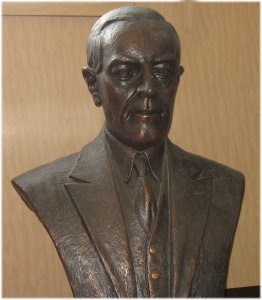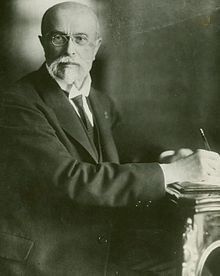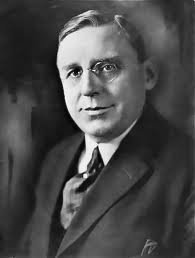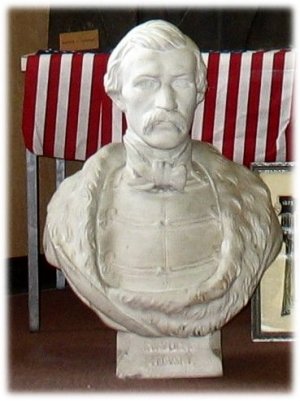
Who's that white guy?
In the cemetery office there are three bronze busts of famous people and a white (plaster?) bust. 
Paul Nemecek, in Heritage Happenings Vol 1 no. 2, tells that he challenged visitors to identify the busts and was pleasantly surprised that many were able to do so. At that time there were three bronze busts with one on a somewhat larger scale than the others.
There are hints. They are important to Bohemians,they were made in the thirties, and the two smaller ones were made at the same time.


The two bust of the same scale are President Woodrow Wilson and President Thomas G. Masaryk. Masaryk was the first president of the newly independent country of Czechoslovakia, which Wilson helped establish.


The busts were created for the 1933 world's fair in Chicago by New York sculptor Anton Vozech. The busts were part of a winning entry submitted to a Century of Progress committee by Henry Paryzek, superintendant of the Flower Department at BNC. The design was dedicated to the spirit of the new country and featured the two busts with a floral globe.

Mayor Anton Cermak had helped organize the fair which he did not live to see. He was honored with a bust, also by Vozech, which was displayed in a memorial on the cemetery grounds. Cermak's mausoleum is here at BNC.




That leaves the final bust - the white guy.


The final bust is from a different time. Fortunately, the bust is labeled. The man is Karel Havlicek; a writer, poet, critic, politician, journalist, publisher and Czech patriot who lived from 1821 to 1856.
The Revolution in the Austro-Bohemian portion of the Habsburg monarchy was defeated in March 1849 but Havlicek contimued his criticism and was twice arrested, tried, and found not guilty by sympathetic Czech jurors. Finally he was arrested and forced into exile and interned. He died at age 35, shortly after returning from exile. In 1910 the Bohemian community in Chicago erected a statue to his honor in Douglas Park.

The statue was removed from the park by the park district to prevent vandalism. It was moved to the museum campus and rededicated in 1981.
